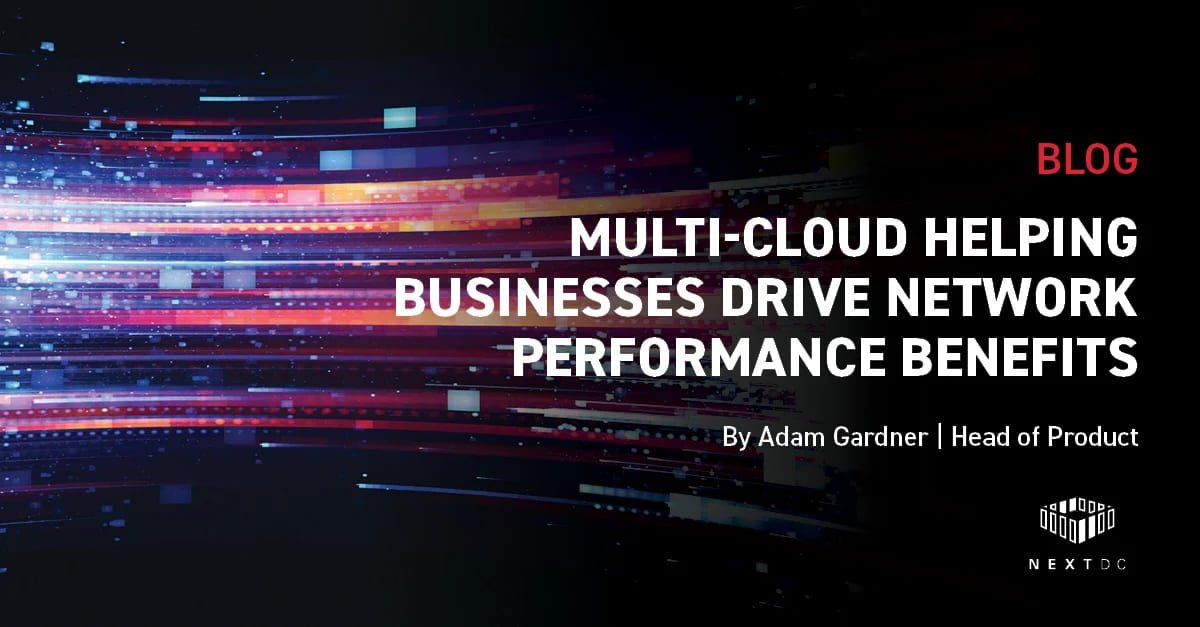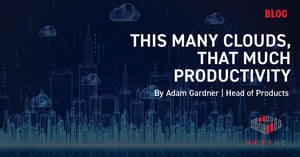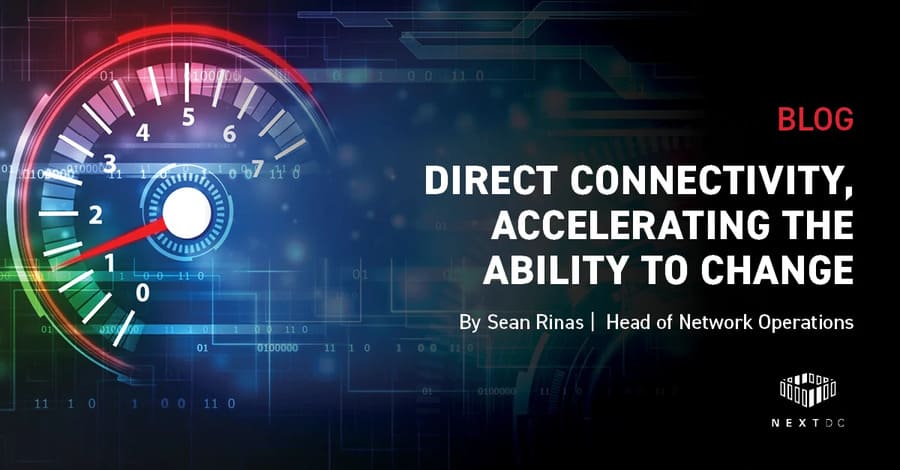Mastering Cloud Strategies in the Evolving Business Landscape
In today's dynamic business environment, the shift to cloud operations is more crucial than ever. As organisations transition, the need to scale securely and efficiently takes centre stage. This article unveils the secrets to mastering cloud strategies and navigating the contemporary organisational landscape.
Transition to the Cloud: A Strategic Imperative
- Organisations are embracing diverse cloud solutions to manage varying data loads effectively.
- Optimisation of IT operations is a key driver for organisations exploring cloud transitions.
- The focus is not on whether a multi-cloud solution is necessary but on finding the one that aligns best with specific needs.
Leveraging Multiple Cloud Providers
- Utilising different cloud providers for distinct workloads enhances resource utilisation and lowers costs.
- Adopting multiple cloud providers strategically helps organisations avoid service limitations and issues from vendor-specific changes.
Types of Multiple Cloud Solutions
- Two prevalent types: multi-cloud and hybrid cloud.
- Distinct platforms with unique benefits and challenges.
Cloud Trends
- Worldwide, spending by organisations on cloud computing infrastructure is forecast to top $1 trillion for the first time in 2024,, while sustaining a double-digit compound annual growth rate (CAGR) of 15.7%.
- The 2020 Data Attack Surface Report, estimates data stored in the cloud will reach 100 zettabytes by 2025, or 50 percent of the world's data.
- The latest trends and statistics in cloud computing from the recently released Flexera 2023 State of the Cloud Report:
- 87% of survey respondents acknowledge having a multi-cloud strategy;
- 72% of organisations opt for a hybrid approach, combining both public and private clouds.
- Out of the organisations utilising public cloud services, 48% are either experimenting or planning use machine learning / AI technologies.
- In total, Amazon, Microsoft and Google accounted for 67% of the cloud market at the start 2024, according to Synergy Research Group.
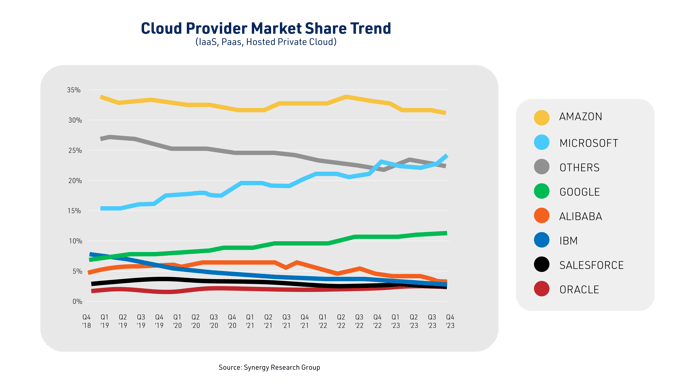
- Google Trends also highlights the rise of Hybrid and Multi Cloud architecture.
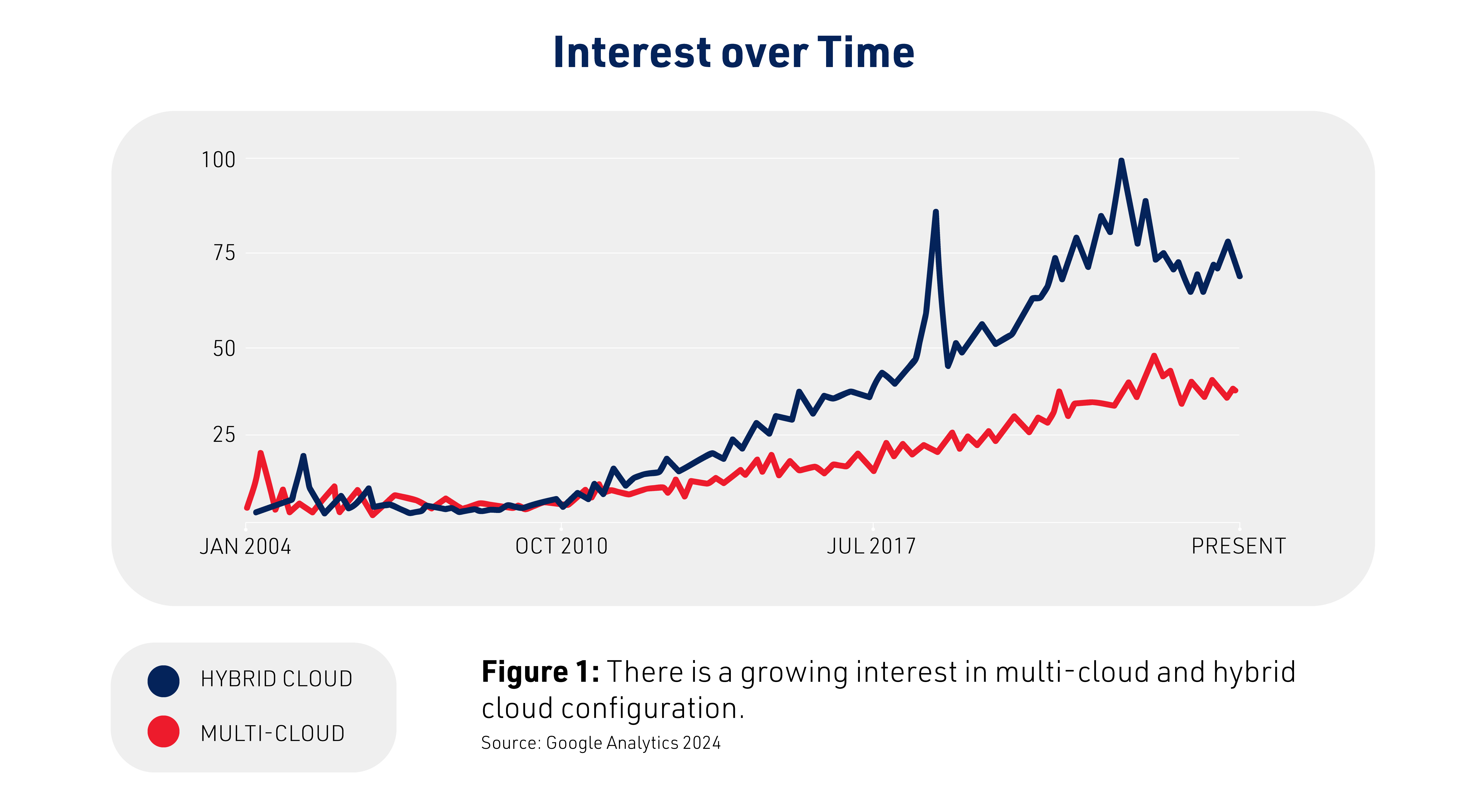
These findings shed light on the evolving landscape of cloud adoption, showcasing the enduring popularity of hybrid and multi-cloud strategies among organisations.
Hybrid Cloud vs Multi Cloud: Navigating the Cloudscape
In the ever-evolving realm of cloud computing, enterprises are expanding their horizons beyond in-house data centres, embracing strategic approaches such as multi-cloud, hybrid cloud, and colocation solutions. Let's unravel the distinctions and explore the latest trends shaping the diverse landscape of cloud computing strategies.
Multi-Cloud Unveiled
- Definition: Utilising multiple public cloud services from various providers like Microsoft Azure, AWS, and Google Cloud Platform.
- Tailored Solutions: Caters to specific needs by leveraging the unique expertise and performance offerings of different cloud providers.
- Example Scenario: Microsoft Azure for robust data analysis, AWS for secure data storage, and Google Cloud Platform for versatile app support.
Hybrid Cloud Demystified
- Definition: Creates a blended computing environment by integrating public cloud infrastructure with an organisation's private cloud or on-premises data centre.
- Data Integration: Maintains some data in legacy data centres or private clouds, seamlessly integrating it with public clouds.
- Flexibility and Optimisation: Offers flexibility and optimisation, allowing organisations to retain control over certain data while leveraging the advantages of public cloud resources.
Distinctions Between Multi-cloud and Hybrid Cloud
1. Architecture
- Hybrid Cloud: Blends private and public cloud services.
- Multi-Cloud: Relies solely on multiple public cloud services.
2. Financial
- Hybrid Cloud: Tricky on the budget, especially with on-site private clouds.
- Multi-Cloud: Shows financial smarts, leveraging cost-effectiveness provided by public cloud services.
3. Resilience
- Hybrid Cloud: May experience downtime for maintenance in the private cloud.
- Multi-Cloud: Naturally resilient, designed for high availability.
4. Flexibility
- Hybrid Cloud: Blends control and scalability, offering nuanced workload management.
- Multi-Cloud: Empowers organisations to avoid vendor lock-in, optimise spending, and choose the best fit for each workload.
5. Security
- Hybrid Cloud Security: Combines the control and compliance of a private cloud with the scalability of public clouds.
- Multi-Cloud Security: Involves managing data across multiple public cloud providers, requiring vigilant oversight for consistent security practices.
6. Integration
- Hybrid Cloud: Expertly combines private and public cloud resources, needing careful coordination and compatibility checks.
- Multi-Cloud: Works with simplicity, but achieving smooth cooperation among various public cloud providers requires finesse.
Top 5 Trends in Hybrid and Multi-Cloud Computing
1. Edge Computing Integration:
-
Example: In hybrid and multi-cloud environments, the integration of edge computing is revolutionising real-time data processing. For instance, a retail company employs edge computing to analyse customer behaviour data instantly, enhancing personalised shopping experiences.
2. Containerisation Growth:
- Example: The substantial growth in containerisation technology is reshaping application deployment. Hybrid and multi-cloud architectures facilitate the seamless deployment of containerised applications across diverse cloud providers. An e-commerce platform, for example, leverages containers to ensure consistent performance and scalability during peak shopping seasons.
3. AI and ML Adoption:
- Example: The key trend of adopting Artificial Intelligence (AI) and Machine Learning (ML) finds application in hybrid and multi-cloud scenarios. An autonomous vehicle manufacturer utilises AI and ML solutions across multiple clouds to automate driving tasks, improving overall safety and decision-making capabilities.
4. Security and Compliance Focus:
- Example: The critical trend of focusing on security and compliance is evident in hybrid and multi-cloud setups. A healthcare organisation leverages these cloud strategies to ensure the secure storage and processing of sensitive patient data, adhering to stringent regulatory requirements.
5. DevOps Integration:
- Example: Gaining prominence, DevOps integration streamlines collaboration for enhanced efficiency. A software development company adopts DevOps practices in a multi-cloud environment, enabling seamless cooperation between development and operations teams, leading to faster and more reliable application delivery.
1. Virtualisation Expansion:
- Opt for Multi-Cloud when seeking to expand virtualisation and explore new opportunities without relying solely on internal infrastructure.
2. Customised Cloud Strategies:
- Choose Multi-Cloud for the flexibility of implementing multiple customised cloud strategies tailored to specific business needs.
3. Performance and Latency Challenges:
- Consider Multi-Cloud if facing performance and latency issues with your existing provider. Exploring more efficient alternatives by incorporating additional providers can address these challenges.
4. Decentralised Service Management:
- Multi-Cloud is suitable when managing several decentralised services is a priority, providing a strategic approach to distributed service architecture
When Is Hybrid Cloud Computing a Better Choice?
1. Data Segmentation:
- Select Hybrid Cloud when you have a website or system hosted in a public cloud but need to retain specific data or applications in a private cloud, ensuring effective data segmentation.
2. Enhanced Security for Sensitive Data:
- Opt for Hybrid Cloud if your company provides a SaaS system via a public cloud, but you require a private cloud for enhanced security, especially when dealing with highly sensitive data.
3. Custom Architecture Needs:
- Choose Hybrid Cloud when you need services and resources from cloud providers alongside custom architecture requirements that only a private cloud can fulfil.
4. Gradual Migration of Legacy Infrastructure:
- Consider Hybrid Cloud when an immediate migration of legacy on-premises infrastructure to the cloud is not currently feasible. This allows for a phased and strategic transition.
Conclusion
Hybrid cloud and multi-cloud are enduring enterprise solution strategies integral to a comprehensive hybrid IT approach. Both terms are anticipated to remain relevant in the long term. While cloud services offer numerous advantages, they also pose distinctive challenges. IT leaders need to establish a robust IT automation strategy to effectively manage the chosen solution. Furthermore, a thorough assessment of enterprise transformations is essential, as the adoption of new technology introduces potential new threats and challenges.
Hybrid cloud and multi-cloud solutions are cornerstones of modern enterprise IT. As you navigate the complexities of cloud adoption, it's also crucial to align your strategy with your unique organisational needs and goals.
By weighing up your unique needs, you can narrow down your choice of multi or hybrid cloud. The perfect type of cloud service is one that delivers the resources you need, protects your assets, and fits your requirements.
Why Choose NEXTDC for Your Data Centre Needs?
Dynamic Partner Ecosystem:
Leverage Australia's most extensive partner ecosystem with a community of 750+ partners to enable more connections with carriers, cloud providers, and IT service providers.
Hybrid Cloud Experience:
Empowering customers to leverage cloud first strategies and optimise multi-cloud deployments to scale mission critical IT infrastructure.
AI, High-Performance Computing and Edge Design:
NEXTDC is at the forefront of supporting Edge computing and High-Performance Compute (HPC) requirements, providing customised solutions to accelerate your AI journey.
100% Uptime:
The only data centre operator in the southern hemisphere with Tier IV Gold certification for Operational Sustainability, NEXTDC guarantees zero downtime for reliability and performance.
Data Centre Interconnectivity:
Secure, private, and direct access to Australia’s most connected range of global cloud providers, integrated with a nationwide network of data centre facilities.
World Class Design and Operations:
Internationally recognised for designing, constructing, and operating Australia’s market leading Tier IV facilities, certified by globally renowned Uptime Institute.
Sustainability Driven:
Demonstrating a commitment to sustainability, NEXTDC prioritises renewable energy sources, achieving leading standards such as 5-star NABERS energy efficiency ratings and TRUE certification.
DTA Certification for Government Agencies:
NEXTDC is certified by Australia’s Digital Transformation Agency (DTA), to ensure compliant and sovereign critical infrastructure choice for government at all levels.
Industry Recognition:
NEXTDC, a listed company on the ASX 100, stands out with industry peer awards as the region's most innovative and customer focused data centre provider.
Carbon Neutral Operations:
NEXTDC's corporate operations are certified carbon neutral under the Australian Government’s Climate Active Carbon Neutral Standard.
Efficiency and Cost Management:
Engineered for outstanding energy efficiency, NEXTDC data centres deliver industry-leading benchmarks for minimising operational cost and total cost of ownership.

